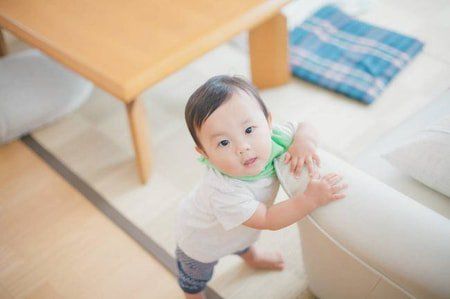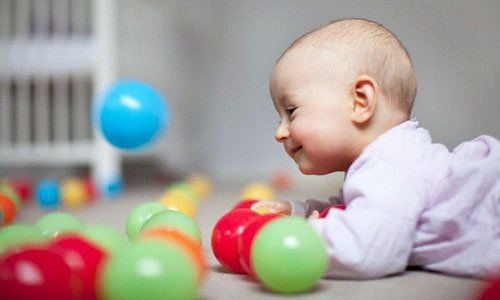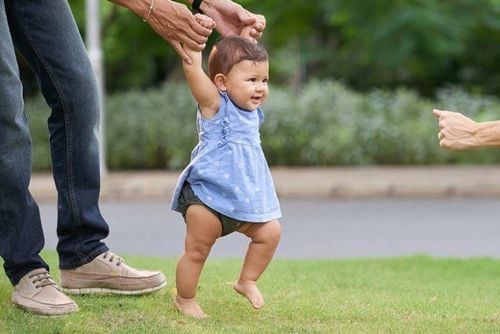This is an automatically translated article.
The article was professionally consulted by Specialist Doctor I Dang Thi Ngoc Chuong - Pediatrician - Pediatrics - Neonatology Department, Vinmec Central Park International General Hospital.One of the milestones marking a child's independent development is the ability to walk on two legs on their own. Although it will be difficult at this stage, most babies can take their first steps by 12 months of age. So what are the points to note about this important milestone?
1. At what age do children walk?
Most babies take their first steps between 9 and 12 months old and walk well by the time they are 14 or 15 months old. However, don't worry if your child takes a little longer. Some babies are completely normal but don't walk until they are 16 or 17 months old. During his first year, your baby is busy developing coordination and muscle strength in every part of his body. Your baby will learn to sit, roll, and crawl before moving on to getting up and standing upright at around 9 months of age.From this point on, it is only a matter of the child gaining confidence and balance. One day, your child is leaning against the couch - possibly sliding along it - and the next, your child hesitantly steps into your waiting arms. After that, children can run and gradually leave their childhood behind. Your baby's first steps are an important first step in their life, starting with independence.
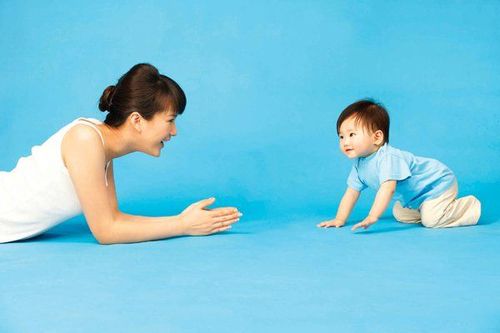
Hầu hết trẻ bước những bước đầu tiên vào khoảng từ 9 đến 12 tháng tuổi
2. Signs that a child can learn to walk.
The Centers for Disease Control and Prevention (CDC) agree that these physical milestones associated with walking are usually reached by the time a child is 1 year old. Signs that a child is able to walk can be:Pulling up with supports Walks while holding things for support Can take a few independent steps Stands firm and can stand alone. 2.1. Pulling up to stand Pulling furniture to stand is one of the first signs that you're ready to walk. This helps strengthen the child's coordination and leg muscles. Over time, small exercises allow your child to stand independently and then, move forward with a few wobbly steps.
You can encourage this by modeling your child's movements while saying “up!” when they pull up and "down" when they squat down again.
2.2. Traveling around the house Children can walk while leaning on objects around the house. Children can use the coffee table to move around or switch from one object to another to move around the room.
This shows your child is learning to move weight and balance while performing these maneuvers. This also prepares for the ability to move forward, which is necessary for walking.
To promote movement, create a path with safe objects for your baby to cling to and move around.
However, be careful with furniture, plants and other items that are not securely fixed to the wall or the ground. They can tip over, resulting in an accidental fall or injury.
2.3. Walking with assistance Provide safe, age-appropriate push toys (not infant walkers) that can inspire your child to walk while picking up speed.
A toy stroller or a toddler toy with wheels and handles can provide fun and help for a toddler who is just starting to walk. You can also hold your child's hand or have him hold a towel while you hold the other end and walk.
2.4. Standing on their own The look on a child's face when they first stand alone is often an expression of success (and perhaps even a little bit of fear).
At this point, the child has balance and stability to stand on his own. Children usually stand for only a few seconds at first and then gradually stand for longer periods of time, boosting the confidence to take a few extra steps.
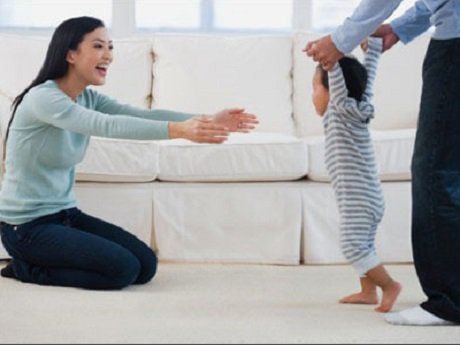
Bạn cũng có thể nắm tay trẻ để giúp trẻ tập đi
3. How babies learn to walk
Newborns' legs aren't nearly strong enough to support them yet, but if you hold them upright with your hands, they'll drop their legs and push them against a hard surface, almost like they're walking. This is a reflex action and your baby will only be able to do it for the first few months of life.When your baby is about 6 months old, he will bounce up and down if you let him balance on your lap. Bounce will be a favorite activity over the next few months, as your baby's leg muscles continue to develop as he begins to master the movements of rolling, sitting, and crawling.
At around 9 months, your baby will probably start trying to stand up on her own while clinging to furniture (so make sure everything in her path is sturdy enough to support her). If you help your child by lifting him up to the edge of the sofa, he will be able to hold on and learn to walk.
At 9 or 10 months, your baby will start to figure out how to bend his knees and how to sit after standing. After mastering the standing position, about 12 months, babies will begin their journey, moving from one fulcrum position to another fulcrum. Children may even let go of their arms and stand without support.
Around this time, your baby will probably also stoop and squat. After doing that, the child can hold the toy from a standing position or take steps when held in a walking position. Your baby may even walk while holding your hand, although he probably won't take his first steps alone for at least a few more weeks. Most children take their first steps on tiptoe with the foot facing out. By 12 months, many toddlers are able to walk on their own - albeit unsteadily.
4. How to help your baby learn to walk
As your baby learns to stand up on her own, she may need some help figuring out how to get back up. If your baby is struggling and crying, you should comfort him and put him back down. Show your child how to bend his knees so he can sit down without tipping over, and let him try it on his own.You can encourage your baby to walk by standing or kneeling in front of him and extending your arms. Or you can take both of your child's hands and let him walk towards you. Your baby may also like a walker or push toy that she can hold while walking. (Find a toddler toy that is stable and has a wide base.)
Always make sure your baby has a soft and safe environment in which to hone his new skills. Follow standard babysitting guidelines and never leave your baby unattended.
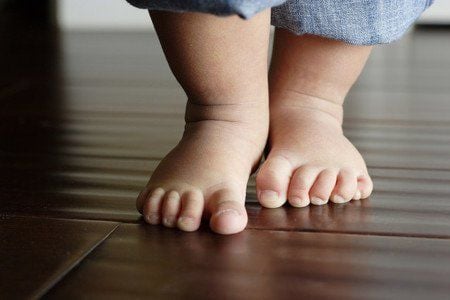
Khi bé học cách tự đứng lên, bé có thể cần một số trợ giúp để tìm ra cách quay trở lại
5. Should you buy a baby walker?
The American Academy of Pediatrics (AAP) does not recommend the use of walkers for young children. Since they make it easy for your child to walk, walkers may prevent his leg muscles from developing correctly. And because they make it possible for babies to reach hot items or toxins that a normal child cannot reach, they are less safe.6. When can children wear shoes?
Stop putting shoes on your baby until he or she is regularly walking outside or on rough or cold surfaces. Going barefoot improves balance and coordination.7. What to do if your baby can't walk
Don't worry if your child is simply a few months behind in walking. But if your baby is unsteady by 12 months, can't walk by 18 months, or can't walk steadily by age 2, take him or her to the doctor.Remember that babies have different schedules and premature babies may reach this and other milestones later than their peers. If your baby was born prematurely, you should calculate your baby's milestones from your due date, which pediatricians call your baby's adjusted age.
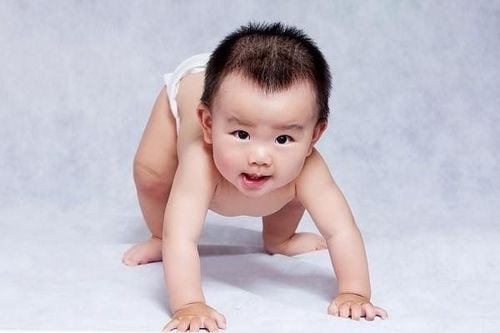
Đừng lo lắng nếu con bạn chỉ đơn giản chậm biết đi một vài tháng
8. After your child learns to walk, what will he or she continue to do?
After those magical first steps towards independence, your child will begin to master more important points about mobility:Standing: By 14 months, your baby will be able to stand alone. Children can squat down and then stand up again, and they can even practice walking backwards. Walking is more stable: By 15 months, your baby should be able to walk fairly well. Babies may enjoy push and pull toys while they are toddlers. At this age, your baby will walk with his feet quite far apart and feet facing out. This is normal and helps the child maintain stability. Stairs: At around 16 months, your baby will begin to enjoy going up and down stairs - although she probably won't adjust to them with your help until age 2. Climbing and kicking: It's likely your baby will be proficient at walking by 18 months. Babies may enjoy climbing all over the furniture and can maneuver up the stairs - although they'll still need help getting down for a few more months. Children may try to kick a ball, although they may not always succeed and may enjoy dancing to music. Jumping: By the age of 25 or 26 months, your child's steps will be more regular and your child will have the same gentle heel-to-toe mobility as an adult. Children will also dance better. Keep moving better: By age three, many of a child's basic movements will be instinctive. Your child should be able to go up and down stairs with one foot per stair. Children will no longer need to focus their energy on walking, standing, running or jumping, although some actions, such as tiptoes or standing on one leg, may still require focus and effort. To help children develop best, especially at the toddler stage, parents should supplement children with supportive products containing lysine, essential micro-minerals and vitamins such as zinc, chromium, selenium, and B vitamins. help meet the nutritional needs of children. At the same time, these essential vitamins also support digestion, enhance nutrient absorption, help improve anorexia, help children eat well, and develop comprehensively.
Please regularly visit Vinmec.com website and update useful information to take care of your baby and family.
Reference source: babycenter.com






